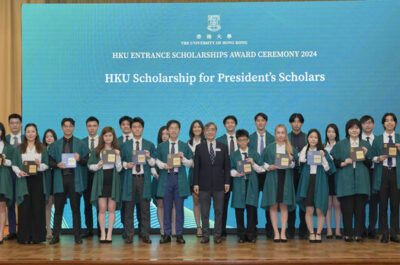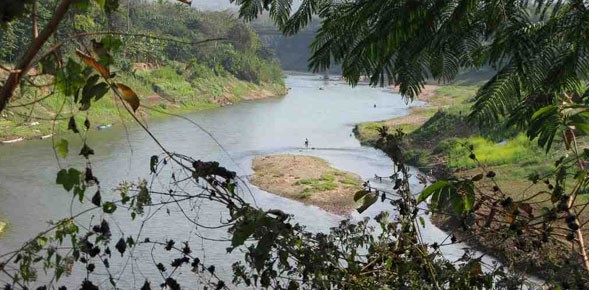…
The Greater Mekong Sub-region embraces six countries, five of them being part of the ASEAN (Association of Southeast Asian Nations): Cambodia, Lao People’s Democratic Republic (Lao PDR), Myanmar, Thailand, and Viet Nam. Integrated to the GMS are two provinces of the People’s Republic of China (China PRC), specifically Yunnan Province and Guangxi Zhuang Autonomous Region.
The six countries form a natural economic area bound together by the Mekong River, which covers 2.6 million square kilometers and a combined population of around 326 million. The river is about 4,350 km long (2,700 miles), making it the 10th longest river in the world. Most populated countries are Vietnam, Thailand and the two combined populations of Guangxi and Yunnan.
The Greater Mekong regroups countries with various political and social systems –kingdoms, republics as well as people’s republics- however all working together within the Greater Mekong Sub-Region (GMS).
The idea of the GMS was launched with the support of the Asia Development Bank back to 1992. Back to that year, the six countries entered into a program of sub-regional economic cooperation, designed to enhance economic relations among the countries.
With support from ADB and other donors, the GMS Program helps the implementation of high priority sub-regional projects in transport, energy, telecommunications, environment, human resource development, tourism, trade, private sector investment, and agriculture. Tourism and of course transportation have been identified as essential activities to rapidly alleviate poverty, bringing prosperity and well-being to a large number of GMS inhabitants.
Since 1992, infrastructure projects totaling over US$ 10 billion have been completed or implemented, among others the construction of highways (East-West and North-South Economic Corridors) as well as the facilitation of people’s and good movements across land borders. Other important activities sectors include hydropower as well as primary energy resources such as gas and oil. The presence of the Mekong River as well as of many water sources continues to support locals’ livelihood in activities such as fishery and agriculture. Fisheries continue to employ some 60 million people in the region, one of the highest in the world!
Hydropower is seen as a major source of energy for the region, especially in Lao PDR but also in Thailand.
Natural environment
The subregion embraces flora and fauna that have expanded northward along the Malay Peninsula into Thailand, encroached upon the high mountains from the Himalayas, or advanced along the broad river valleys as dry deciduous forests similar to those of India. Ten million years of changing sea levels have left a rich legacy of unique life forms that have evolved in isolation on the Cardamom and Annamite mountains of Cambodia, Lao PDR, Thailand, and Viet Nam.
Religion
Buddhism dominates the region. Cambodia, Laos, Myanmar and Thailand follow the teaching of Buddhism Theravada. The percentage of the population following Buddhism Theravada varies from 67% in Laos to 95% in Cambodia and Thailand. In Vietnam, devotees follow mostly the teaching of Buddhism Mahayana. The percentage of population adept of Buddhism in Vietnam reaches 55%. In China, Taoism and Buddhism Mahayana are the main religions representing respectively 30% and 18% of the population’s religious practices.
Other important religions are Catholicism (particularly in Vietnam) and Islam (with large Muslim ethnic groups in Cambodia, Myanmar and Thailand). Vietnamese in the South practice also Cao Dai, a relatively new religion created 100 years ago.
Languages
All GMS countries have their own national language, originally derived from Sanskrit for Cambodia, Laos, Myanmar and Thailand. However, only Thai and Laotian are relatively close to each other. The Vietnamese vocabulary has many borrowings from the Chinese language as Vietnamese used to write with Chinese characters until French changed the alphabet into Latin characters. The most spoken foreign language today is English with many people still mastering French in former French Indochina (Cambodia, Laos and Vietnam).

Ethnics
There is a dominant ethnic in each GMS country, with a great diversity of minority ethnics.

Vicky is the co-founder of TravelDailyNews Media Network where she is the Editor-in Chief. She is also responsible for the daily operation and the financial policy. She holds a Bachelor's degree in Tourism Business Administration from the Technical University of Athens and a Master in Business Administration (MBA) from the University of Wales. She has many years of both academic and industrial experience within the travel industry. She has written/edited numerous articles in various tourism magazines.




![[PR] PR_Ascott and Vimut Hospital_2024](https://www.traveldailynews.asia/wp-content/uploads/2024/04/PR-PR_Ascott-and-Vimut-Hospital_2024-400x265.jpg)



























































